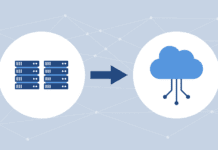The Israel Electric Corporation (IEC) is the sole integrated electric utility in Israel and generates and transmits substantially all of the electricity used in the country. Not surprisingly, the company takes disaster recovery seriously.
So IEC recently turned to EMC (NYSE: EMC) to make sure its VMware (NYSE: VMW) Virtualizationenvironment would be up and running quickly in the event of a disaster.
About a year ago, the company considered moving some of its non-production virtualized applications to its production environment. “We want to start with Windows types of applications, no SQL or I/O-intensive applications,” said Lea Kronenberg, storage manager at IEC’s Haifa data center. IEC maintains two data centers, one in Haifa and a second in Tel Aviv.
The challenge was to make sure that the company’s strict virtualization and business continuity requirements were satisfied.
IEC began virtualizing non-production applications about two years ago. According to Kronenberg, the Haifa data center has a production cluster with three physical servers and dozens of virtual servers.
The types of applications on the virtual cluster include IBM WebSphere MQ Message Broker, a platform-independent enterprise bus messaging service, an SAP portal, Microsoft Office SharePoint Server, Microsoft Internet Information Server, and some in-house applications.
The $6 billion Israeli company, in business since 1923, uses EMC Symmetrix DMX-3 high-end storage configured with about 60 terabytes at each data center.
The organization replicates production data from Tel Aviv to Haifa and from Haifa to Tel Aviv using EMC’s Symmetrix Remote Data Facility (SRDF) software for remote replication. The two facilities are about 100 kilometers apart.
Before using SRDF at the disaster recovery site, IEC backed up its data to tape, which was then stored off site.
VMware Integration Issues
The idea to move to EMC’s SRDF was forward-thinking. But IEC’s IT specialists realized they needed to do more than just replicate the data for their Linux and Windows applications.
“Some of the Windows applications are hardware-dependent, which means that when running them on another server, there was a lot of customization required,” said Kronenberg. In some cases, they even needed to reinstall the applications. The thought of buying a separate, identically configured server wasn’t considered a wise use of resources.
For the pilot, IEC built a separate VMware cluster in Haifa and a DR cluster in Tel Aviv. The plan was to run separate DR scenarios. Several applications were moved to the pilot cluster for testing. IEC installed VMware vCenter Site Recovery Manager (SRM) to automate the recovery process and eliminate the complexity of managing and testing recovery plans.
“We ran the test in a separate network environment without interfering with the production work,” said Kronenberg, who said the organization was able to run multiple tests until they were satisfied with the results.
As it turned out, IT ran into problems during the pilot. The company called in EMC engineers, who worked with IEC’s engineers to integrate VMware vCenter SRM into the organization’s EMC Symmetrix SFDF remote application infrastructure.
After successfully completing the pilot, IEC installed a new VMware production cluster with VMware vCenter SRM in Haifa and another cluster in Tel Aviv, ready to be used as a disaster recovery site for Haifa’s applications. “We installed some important virtual machines in this cluster and built a DR plan for them,” said Kronenberg.
The DR solution gives IEC a server infrastructure — VMware cluster, data replication and automated and tested procedures — to ensure the organization’s ability to recovery in the event of a disaster.
Follow Enterprise Storage Forum on Twitter





